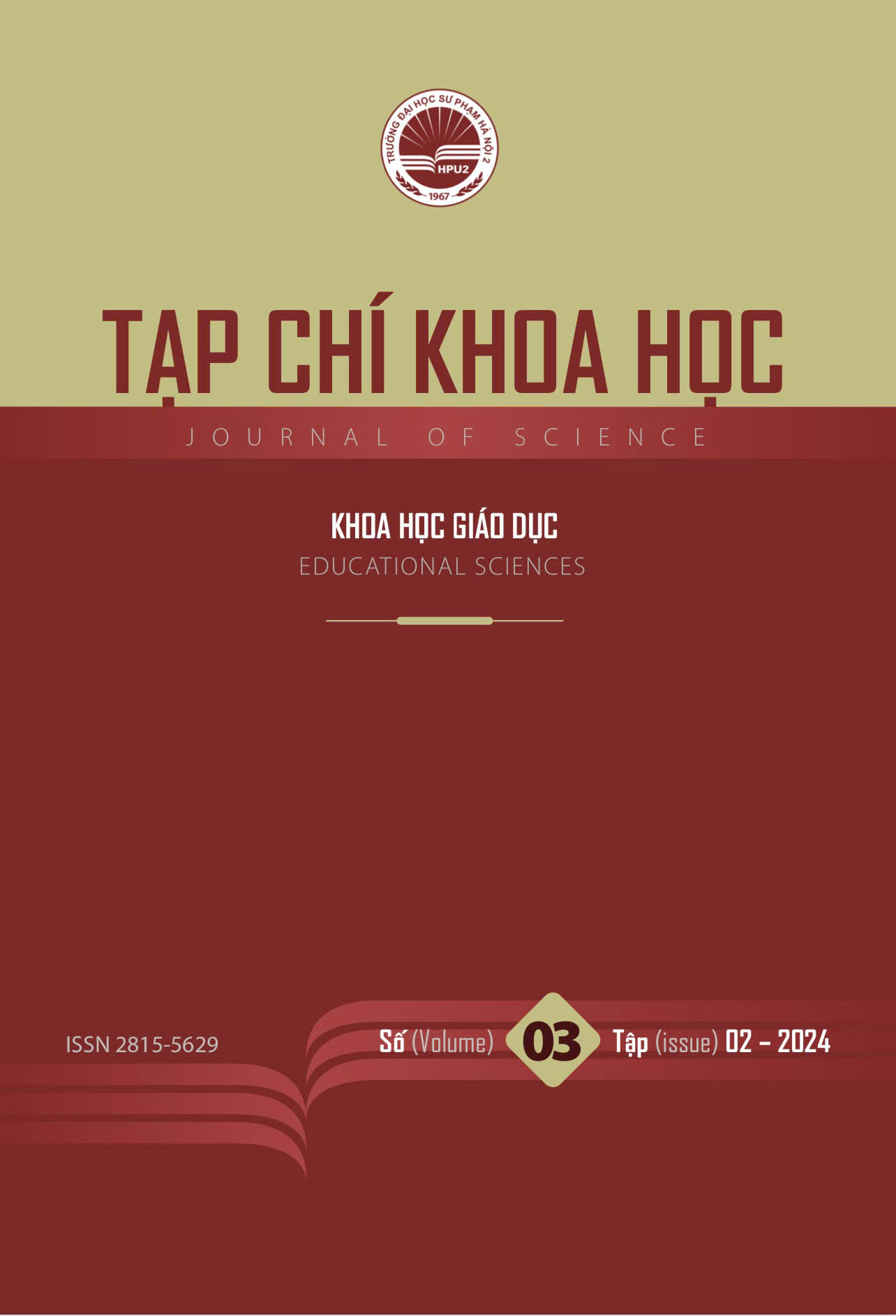Cấu trúc kỹ năng tường thuật của trẻ mầm non
Tóm tắt
Kỹ năng tường thuật đóng vai trò quan trọng trong việc giúp trẻ phát triển toàn diện, từ khả năng giao tiếp đến kỹ năng ngôn ngữ và tư duy logic. Qua đó, trẻ biểu đạt ý kiến, suy nghĩ và cảm xúc của mình một cách rõ ràng và hiệu quả, tăng cường khả năng giao tiếp và tương tác xã hội. Tuy nhiên, những nghiên cứu về kĩ năng tường thuật của trẻ em ở Việt Nam chưa nhiều. Bài viết này nghiên cứu tổng quan mô tả từ tài liệu để tổng hợp các quan niệm về kỹ năng tường thuật và thành phần, cấu trúc của kỹ năng tường thuật của trẻ mầm non. Kết quả cho thấy, kỹ năng tường thuật gồm 2 thành phần chính: Kỹ năng hiểu sự kiện và kỹ năng trình bày sự kiện.
Tài liệu tham khảo
1. Adams, C. (2001), Clinical diagnostic and intervention studies of children with semantic’pragmatic language disorder, International Journal of Language & Communication Disorders, 36(3), pp. 289–305.
2. Blom, E., & Boerma, T. (2016), Why do children with language impairment have difficulties with narrative macrostructure?, Research in Developmental Disabilities, 55, pp. 301–311.
3. Boudreau, D. M. (2017), Language disorders from a developmental perspective. Narrative abilities in children with language impairments, Psychology Press, pp. 331–356).
4. Colozzo, P., Gillam, R., Wood, M., Schnell, R. D., & Johnston, J. R. (2011), Content form in the narratives of children with specific language impairment, Journal of Speech, Language, and Hearing Research, 54, pp. 1609–1627. doi:10.1044/1092- 4388(2011/10-0247).
5. Gagarina, N. V., Klop, D., Kunnari, S., Tantele, K., Välimaa, T., Balčiūnienė, I., ... & Walters, J. (2012). MAIN: Multilingual assessment instrument for narratives. ZAS papers in linguistics, 56, pp. 155–155.
6. Hughes, D., McGillivray, L., & Schmidek, M. (1997), Guide to narrative language: Procedures for assessment, Eau Claire, WI: Thinking Publications.
7. Karlsen, J., Hjetland, H. N., Hagtvet, B. E., Braeken, J., & Melby-Lervåg, M. (2021). The concurrent and longitudinal relationship between narrative skills and other language skills in children. First Language, 41(5), pp. 555–572.
8. Liles, B. A., Duffy, R. J., Merritt, D. D., & Purcell, S. L. (1995), Measurement of narrative discourse ability in children with language disorders, Journal of Speech and Hearing Research, 38, pp. 415–425.
9. Losh, M., & Capps, L. (2003), Narrative ability in high-functioning children with autism or Asperger’s syndrome, Journal of Autism and Developmental Disorders, 33, pp. 239–251.
10. Paul, R., & Smith, R. L. (1993), Narrative skills in 4-year-olds with normal, impaired, and late-developing language, Journal of Speech, Language, and Hearing Research, 36(3), pp. 592–598.
11. Petersen, D. B. (2011), A systematic review of narrative-based language intervention with children who have language impairment, Communication Disorders Quarterly, 32(4), pp. 207–220.
12. Trabasso, T. and Rodkin, P., 1994. Knowledge of goals/plans: a conceptual basis for narrating Frog where are you? In R. A. B. Berman and D. I. Slobin (eds), Relating Events in Narrative: A Crosslinguistic Development Study (Hove: Lawrence Erlbaum Associates), pp. 85–106.
13. Van Bysterveldt, A. K., Westerveld, M. F., Gillon, G., & Foster‐Cohen, S. (2012), Personal narrative skills of school‐aged children with Down syndrome, International journal of language & communication disorders, 47(1), pp.95–105.
14. Young, G. A., James, D. G., Brown, K., Giles, F., Hemmings, L., Hollis, J., ... & Newton, M. (1997, The narrative skills of primary school children with a unilateral hearing impairment, Clinical linguistics & phonetics, 11(2), pp. 115–138.
Tải xuống
Đã Xuất bản
Cách trích dẫn
Số
Chuyên mục
Giấy phép

Tác phẩm này được cấp phép theo Giấy phép quốc tế Creative Commons Attribution-NonCommercial 4.0 .





